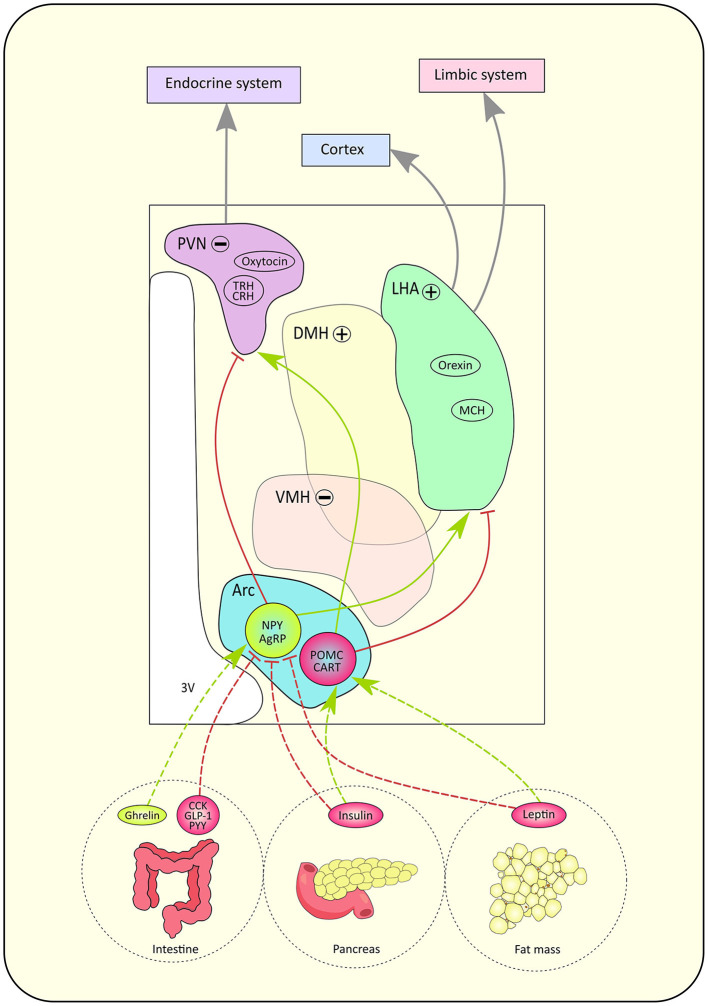Figure 2.
Schematic pathway of the lipostat and its peptidergic circuitry. According to hunger state, hormones are released by the intestine, pancreas and fat mass. Those signals directly influence neuronal activity in the hypothalamus through their action on antagonistic neurons located in the arcuate nucleus (Arc): orexinergic neurons expressing neuropeptide Y (NPY)/ agouti-related peptide (AgRP) and anorexinergic neurons expressing pro-opio-melanocortine (POMC)/ cocaine- and amphetamine- regulated transcript (CART). Gut hormones such as cholecystokinin (CCK), peptide YY (PYY), glucagon-like peptide 1 (GLP-1) inhibit NPY/AgRP neurons while ghrelin stimulates NPY/AgRP neurons. The pancreas secretes insulin while leptin is secreted by fat mass cells. Both hormones trigger the inhibition of NPY/AgRP neurons but the stimulation of POMC/CART neurons. Red arrows represent inhibitory connections, green arrows represent stimulatory connections, gray connections represent indirect pathways. The paraventricular nucleus (PVN) hosts neurons expressing oxytocin, thyrotropin-releasing hormone (TRH) and corticotropin-releasing hormone (CRH), while the lateral hypothalamic area (LHA) contains neurons expressing orexin and melanin-concentrating hormone (MCH). The '+' sign means the nucleus has an orexinergic effect on food intake when activated, whereas the '−' sign indicates that the nucleus has an anorexinergic effect on food intake when activated. Indeed, when activated, the dorsomedial hypothalamus (DMH) and lateral hypothalamic area (LHA) have an orexinergic action while the ventromedial hypothalamus (VMH) and paraventricular nucleus (PVN) have an anorexinergic action on food intake. Finally, the PVN sends information to the endocrine system while the LHA carries input to the cortex and limbic systems (24). 3V, third ventricle.

